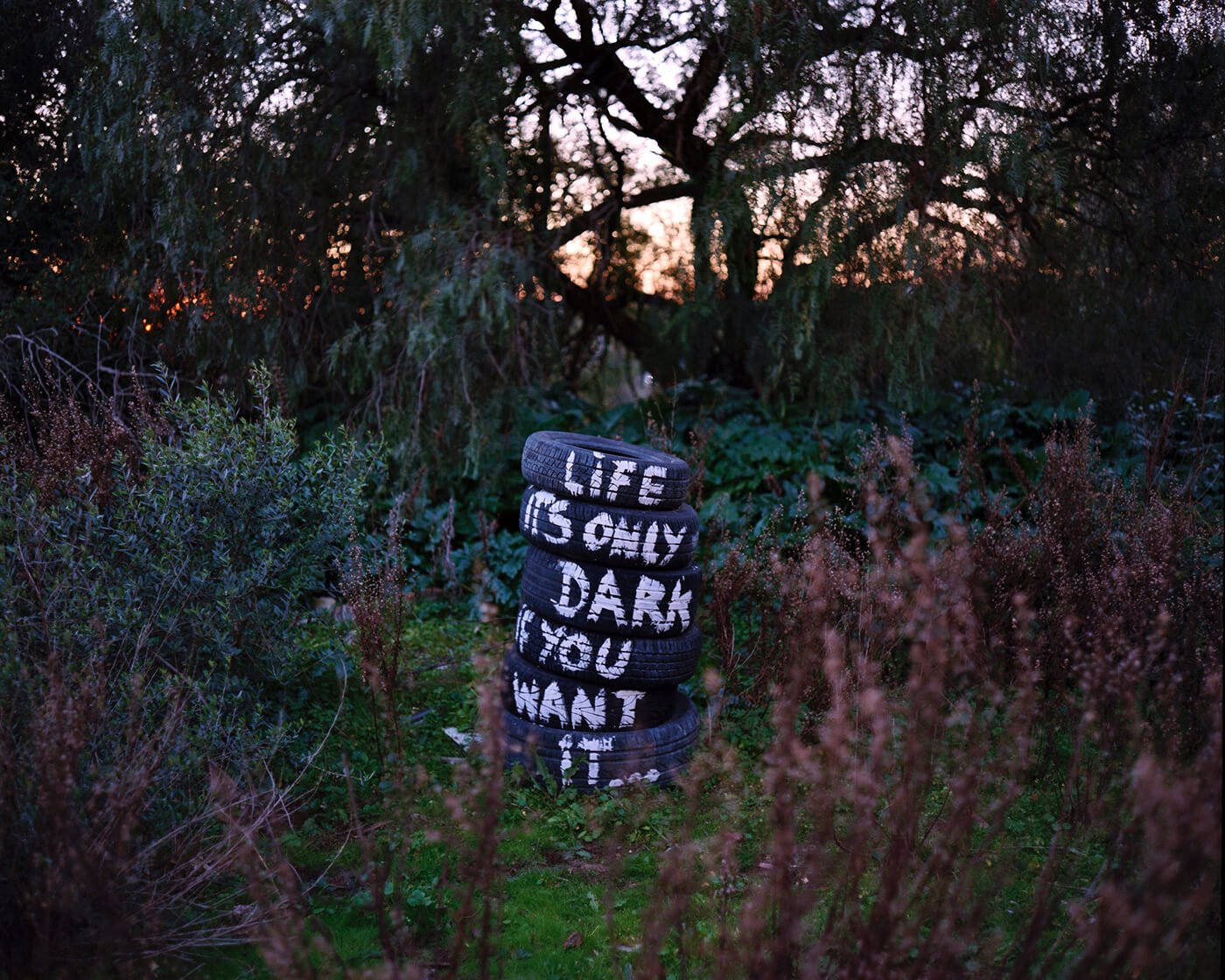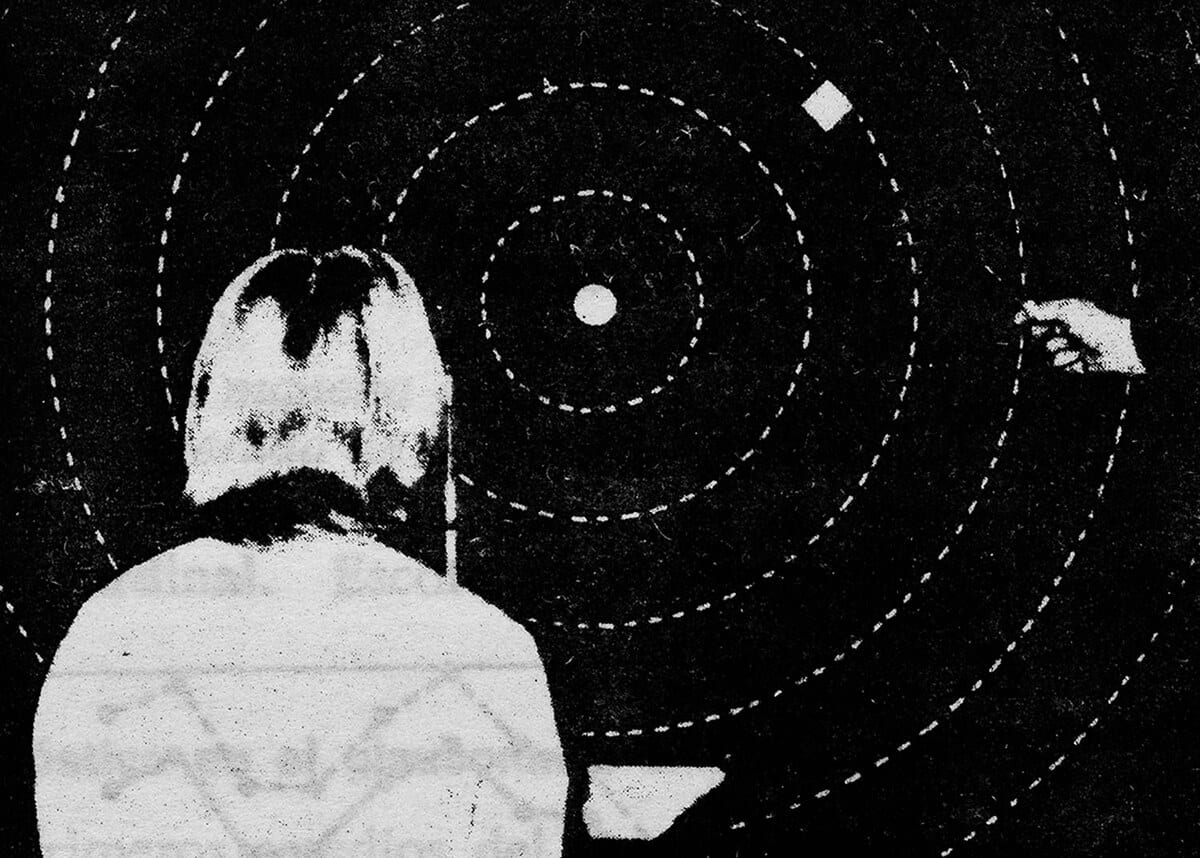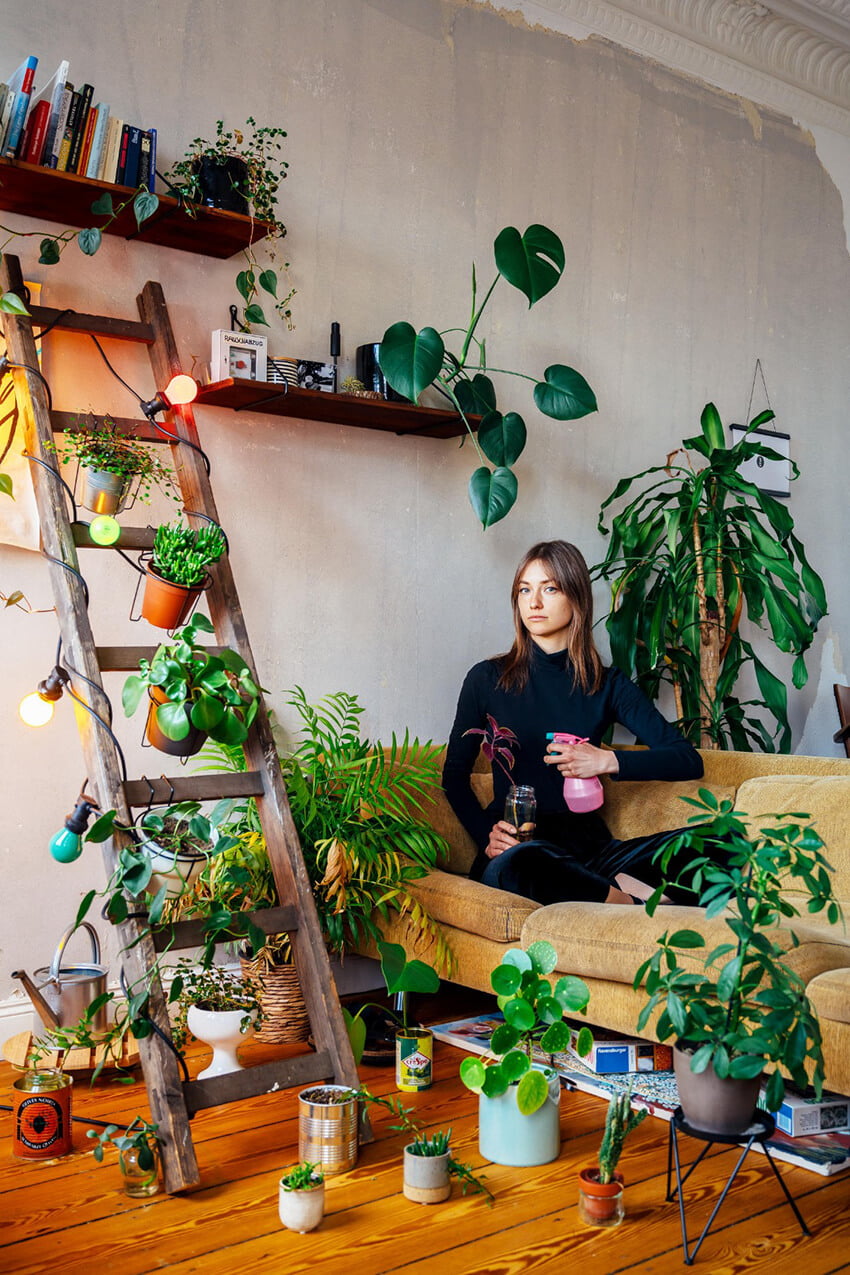EDITORS’ PICK
Isolation and Introspection
LIFE IN LOCKDOWN
An Editors’ Pick for our current times
Following the announcement of the winning selection for our April 2020 Open Call and our subsequent Editors’ Pick, our Editors announce a third curated selection of work from the submissions received, this time inspired by and in response to coronavirus.
We must make clear that none of the images in this selection were submitted directly in response to a coronavirus theme, and that while some explicitly confront the topic, or were shaped by its implications, others were made long before the virus came to light. With this latter category then, it is the curator’s interpretation that befits the topic, rather than the photographer’s intent. But is that not revealing in itself? With half of the world’s population in some form of lockdown during April 2020, and the pandemic dominating 24-hour news cycles, it’s fair to say that coronavirus has touched almost everything. With its near-ubiquity, it has become almost impossible to view image-making entirely aside from that lens.
It is of course a somber topic, but within these works we see glimmers of hope, wit and creativity, and as a cohesive selection they highlight the intersectionality of our lives – what draws us together, as well as what separates us. We hope you find something illuminating across the work of these 20 talented photographers.
BANNER IMAGE COURTESY OF JASNA VUKOS
www.jasnav.com / @jasna_vukos
“This is from a series of self-portraits in hotel rooms that I have visited for work or for personal reasons. Hotels are particularly interesting for me as they almost materialize this feeling of a “non-place” of “being nowhere”. They are places of transition, in which we are almost levitating, or taking a break, before we actually find our “place” somewhere. Hotels are places where our identity, as we know it, can vanish, and where we can, at least for a moment, forget who we are and where we come from, where we can feel free from our roots. Being a nomad myself and having changed my home, country, language, even continent multiple times, I feel that a hotel is a place where all these identities that I feel within can co-exist. It gives me the opportunity to understand that identity has many layers, and that it is a mobile, and not a fixed structure, like we normally believe.”

IMAGE COURTESY OF IAN VELLOZA
www.ianvelloza.com / @ianvelloza
“Isolated introspection in a quarantined journey of rediscovery.”

IMAGE COURTESY OF MARTIN SCHITTO
www.schitto.com / @fotomartsch
“I decided to visit a German hospital (Klinikum Aschaffenburg Alzenau) to shoot these portraits. Doctors and nurses from the COVID-19 ward in full armour at the end of their working shifts. keeping people alive is an exhausting challenge.”

IMAGE COURTESY OF JESSICA PEACOCK
@_jessica_p_
“Taiwan.”

IMAGE COURTESY OF DANIELE MELI
www.humanswerehere.danielemeli.com / @danielemeli
From the series Humans Were Here: “Flowers, buildings, food, plastic. A collection of traces that humans left in the artificial context they built over the years. Signs created in the present can suddenly become part of the past, where they represent things that no longer exist. Nothing is written to last forever; sometimes it is worth to dedicate a look to currently insignificant future traces. Look.”

IMAGE COURTESY OF MORFI JIMÉNEZ
@morfijimenez
From the series The (un) Real: “Social, economic and political circumstances are reflected and documented by artists since ancient times. Although health crises are not an everyday issue, they are also part of human history. And once again, art is not an outsider. Amid all what is involved in it, the current crisis has featured a cultural explosion. Different artistic and academic manifestations have invaded our screens generating an unprecedented milestone, that without a doubt is built in the midst of a deep solitude. I am no exception. Like many, I am spending the quarantine time lonely. Time that has confronted us with a limbo, a moment in which time stopped and in which fear, melancholy and uncertainty appear. And it is in this context that my most recent project is born: The (un) Real. Given the impossibility of going out to photograph, I’ve re-thought my work processes. I look for archival images, and ask my friends and parents to take self-portraits, turning these digital images into 35mm negative films, and projecting them onto a canvas installed on the terrace of my apartment, thus emulating a movie theater, but framed in a night skyline of the city of Lima. It showcases an inversion of expressive codes and narrative roles. The images projected as a film are a representation of reality, while the contrasting landscape is a suspended, contained and uninhabited city. The city is now a fiction, an unreachable space of which we cannot temporarily be a part.”

IMAGE COURTESY OF SANTIAGO MARTINELLI
@survivalerror
From the series Decomposition: “Decomposition explores the vision, the eyes and the limits of their senses and representations, recycling and intervening ophthalmological photographs. These images look into the eyes and through them, abstracted by their ambiguity, seek to reflect on the vision as a form of meaning.”

IMAGE COURTESY OF KICKI LUNDGREN
www.kickilundgren.com / @lukicki
From the series Los Viejos: “Aging – on the surfaces and within. When retiring we are expected to slow down and enjoy freedom from our highly scheduled lives. In the absence of a workplace some experience a lack of community, while others look for new social contexts. The bold break from their everyday context and venture to create a new life in a new place towards the end of their lives. Many pensioners are turning away from the cold and the darkness to seasonally or fully settle down in Spain. It is this this group of pensioners I have chosen to depict in my new project Los Viejos (Spanish for The Elderly). My intention is to depict what happens on the surface as well as within when we age, and how the body – and our perception of it – changes. I also want to depict how life in Spain might look when you at a mature age are trying to find a new social context in a place where you might not know the language. I have chosen to photograph in Spain because the warmer climate makes it more natural to photograph undressed bodies. Finding a new social context at an old age is also oftentimes more prominent for pensioners who have chosen to uproot and move than those who have decided to stay in their native countries.”

IMAGE COURTESY OF JULIJA GOYD
www.julijagoyd.com / @julijagoyd
From the series A Beam of Light for Boundary’s Sight: “This series investigates separation and alienation of the space by placing a source of light under the water’s surface. Water is about 800 times denser than air. It slows the speed of light and bends its rays. This so called refraction effect draws a boundary between two completely different worlds: the space we live in and the space underwater, which is so foreign to our survival.”

IMAGE COURTESY OF FABRIZIO SPUCCHES
www.spucches.com / @spucches_studio
”A series of photos about isolation in a condo of Milano. The intent is to witness the human condition during the Coronavirus crisis through the eyes of the neighbours in relation with the environment, the home and the condo, within which they are confined due to the quarantine.”

IMAGE COURTESY OF FENG ZHANG
”These photos were taken during the time of Coronavirus in China. I live in a small town in Anhui, a province next to Hubei, the center of epidemic. The disease nevertheless takes control of everyone’s life, leaving us under masks, fears, distance, and imprisonment. In China, the governmental regime has employed heavy surveillance to manage epidemic and people. We do not know if such life-saving, almost militarized surveillance is to be deeply thanked to, as it paradoxically deprives our freedom and desire to be intimate to each other. It provokes our desire to rebel. But against whom? The disciplinary government or the invisible disease that hunts us. It is in this absurdity that we keep on living. The politicized surveillance mechanism also means severe censorship on the Internet. Who can speak and who dares to speak?”

IMAGE COURTESY OF CARLO RUSCA
www.carlorusca.com / @carlorusca
From the series Turistica: “The season is over. The Autumn wind shakes the branches of the trees, solitary witnesses in a motionless space. In a house of someone who cannot sleep, a television lightens up the pale white painted rooms. Empty hotel neon lights reflect their luminescence on the windscreen of my car. Silence is filled with small, almost imperceptible, sounds: old bulbs flickering, radiators and ventilation systems sizzling in the dark. Everything looks the same, orderly and ready. Perfectly outlined. It’s hard to not feel alone. I get out of the car and I light up a cigarette while watching a big calf vanishes like a ghost in the haze that has risen in the meantime. His story is already written. He is stuck. Nothing can be changed. Here is the light of dawn. I think about the people I lost and who has lost himself in this place. Animals speak to me and palms look like fireworks. You couldn’t feel bad. Turistica is a long-term project realized in medium format analog photography shot in some neighborhoods of Locarno, my hometown, in the southern part of Switzerland. It’s a visual journey dedicated to all the tourist destinations and their lonely citizens.”

IMAGE COURTESY OF MILTIADIS IGGLEZOS
@miltiadis_igglezos
“Still life in my Grandfather’s bedroom.”

IMAGE COURTESY OF PAUL KONCEWICZ
www.photopaul.de / @paulkoncewiczphoto
From the series Self Isolation: “In these times, when everybody should stay home, I’m taking pictures of young people at home in self-isolation. Entering their private rooms, which are also a stage of self-presentation, gives me the opportunity to tell much more about the persons. The photographic process is always spontaneous. I’m using only stuff I find in these rooms.”

IMAGE COURTESY OF MATEO PEREZ
www.mateoperez.com / @ojo_rasgao
“This is a picture I shoot at Central Park (New York). At the time I was more interested in different ways of seeing landscape and architecture through things in the foreground, kind of like a paparazzi. Even though it wasn’t planned like this, that girl running between two buildings completes the image with the grace of spontaneity.”

IMAGE COURTESY OF THOMAS DE WOUTERS
www.thomasdewouters.com / @thomasdewouters
“This series is all about the intimate during this dark period we live facing an unknown virus.”

IMAGE COURTESY OF ANNE MARQUET
From the series La Cité de l’Espoir (City of Hope): “Named after the name of an institution based in Belgium. People with learning disabilities explore the physicality of the world and I focus my attention on the way they negotiate with it.”

IMAGE COURTESY OF VALERIE CHAUFFOUR
www.valeriechauffour.com / @valerie_chauffour
From the series Tokyo Moments: “My fascination for the city of Tokyo, its colours, geometries and everything that makes it up, does not wane. This is a walk, with a curious, inquisitive, surprised and delighted look.”

IMAGE COURTESY OF ADA ANSELMI
www.lefotodiada.it / @ada_anselmi_photo
From the series Ouvertures: “In this series there is the slow passage of time and the movement of life. The images are taken within two seasons from the window of my kitchen and portray the realities present in six front windows, six “openings” on the existence of others. With patience and a little irony, I catch several spots of real life, trying to catch and focus on beauty of small things in a kind of zero-kilometer photography. I set my gaze on daily actions of my neighbors, always gracefully, with a sort of modesty that leads me to portray those people without ever really showing them, even though you can pick up the sociological aspect by investigating habits, activities, what they love to wear, the moods. They are all unconscious actors of a slow and composed symphony, present or absent they are, everyone on his stage, each at his window, each with his own life. The actions and subjects belong to our common everyday life, they are fragments of images that we are accustomed to passively undergo; with this work I show that only through careful observation we can extrapolate them from the context and thus load them with a new meaning.”

IMAGE COURTESY OF TANIA VOLOBUEVA
www.taniavolobuev.com / @fotocall.me
“In this difficult moment for the whole world we face a totally new challenge for which no one was prepared. Each of us should participate through their skills and their ability to support the community in the present, here and now, but with eyes already directed towards the new future that awaits us. To what will come? Some families are apart, and many people have found themselves isolated, far from their affections, from their beloved ones. Others, even if reunited, still cannot see their parents, their brothers and sisters, their friends. During this period I was able to put into practice projects that for years were navigating between my thoughts and my ambitions. One of them led me to rethink the concept of family portrait. One of the first expressions of photography that originated from the portrait commissioned to sculptors since antiquity and to painters, in its most modern sense, since the Renaissance. I found wonderful photos of family portraits during the Spanish flu pandemic of the last century that is where I drew my inspiration from. My idea is to make family portraits through video calls, using simultaneously all the technology and devices that we have available. I enter homes all over the world to photograph through the screens and webcams of computer, tablet and phones of mine and my models’ gadgets, moments of intimacy and everyday life of home life.”
